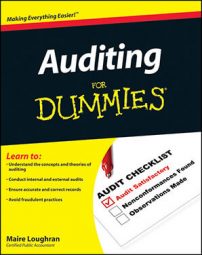As you are performing due diligence in your audits, you take subsequent events into account. There are three Type II events that you should investigate to determine whether you need to disclose in the financial statements: the purchase or sale of a business segment, the sale of a large amount of stock or the issuance of bond, and events that create catastrophic losses for your client.
Business segments are components that operate within a company. For example, a ladies shoe manufacturer makes boots, pumps, sandals, and tennis shoes — these are all business segments. Perhaps after the balance sheet date the company decides to close the tennis shoe segment of the business. (Or, on the flip side, the company decides to buy a competing shoe manufacturer.) What action do you need to take? Keep these simple processes in mind:
Look at all documents related to the event, including the sale contract or proof of cash disbursement and/or loan paperwork for the purchase of the segment.
Make any third-party confirmations with the transaction’s other party.
Third-party confirmations are forms sent to outside individuals or companies to verify your client’s financial statement assertions.
If the event is material, you prepare a footnote disclosure to the financial statements. When judging materiality, ask yourself this question: Will including or omitting information about this event likely alter the decision of a reasonable user? (An audit report user may be a potential investor or lender or anyone else who has a financial interest in your client.) You use your professional judgment here, and when in doubt, you ask your audit team leader.
If you determine that the event is significant enough, you must include pro forma financial information in your audit report.
Here’s an example of a disclosure of this nature:
During this period, the Company sold all its interest in Segment A. Total proceeds from the sale were approximately $30 million, and we recognized a pretax gain on this sale of approximately $17 million, which affected the corporate operating segment and was included in other income as net in our consolidated statement of income.

